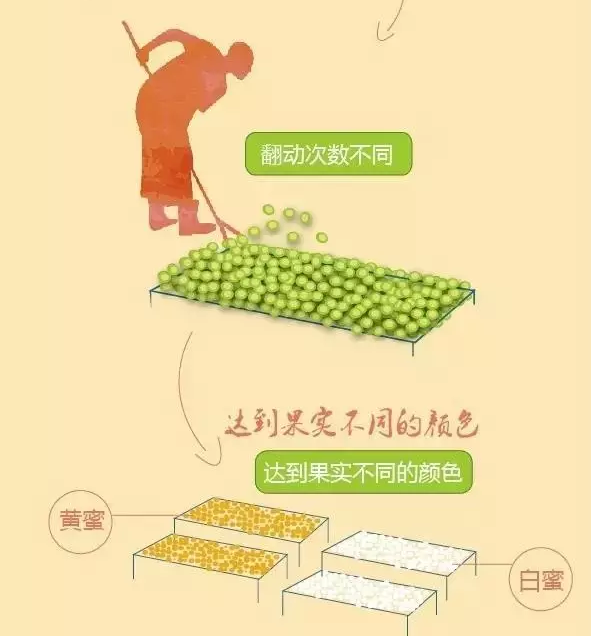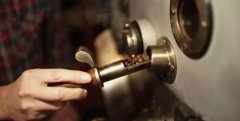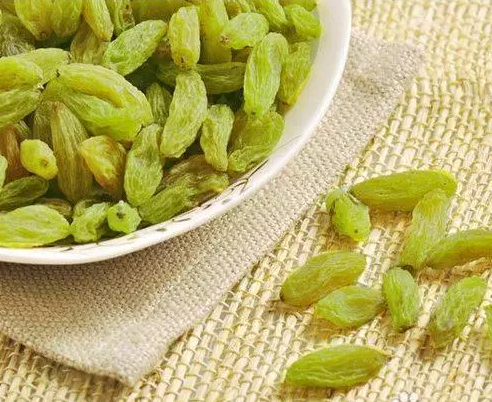On the treatment of double fermented Honey in Costa Rica orange honey treatment method orange honey
For professional baristas, please follow the coffee workshop (Wechat official account cafe_style)
On the orange honey of orange honey treatment
This is derived from the traditional method of honey treatment.
Fully ripe fruit is picked, selected and removed, which is the same as washing, but the special feature is that a certain amount of pulp juice is left when the pulp is removed, and then dried in the sun bed, and the pulp is left on the "parchment". Leaving a certain amount of juice creates a brighter flavor for the coffee.
[honey treatment] in addition to the thickness of pectin planing, it is also divided into black honey, red honey, orange honey, yellow honey and white honey according to the frequency of turning in the sun.
La Lajas Manor, Costa Rica, 100% retains pectin, [yellow honey]: coffee is placed on the scaffolding and flipped once an hour; [red honey]: coffee is flipped several times a day, not as frequently as yellow honey; [black honey]: once a day.

About the carbon dioxide yeast method:
Fermentation in an environment with low oxygen concentration can reduce the rate of sugar decomposition in pectin, thus avoiding the acidity of alcohol. Therefore, after injecting carbon dioxide, the fermentation time can be extended to nearly three days, even if it does not produce a dry taste or the taste of acetic acid. Sealed containers can help produce more aroma, and coffee can have more floral flavor. Studies have shown that when it is fermented at low temperature, 4mur8 °C will bring more complex acidity to the coffee, while if you want to achieve more sweetness, it can be fermented at a slightly higher temperature, that is, 18 Mel 20 °C.
On the basis of the treatment of carbon dioxide anaerobic fermentation last year, the Emerald Manor further considered how to bring richer flavor to the coffee while ensuring excellent acidity and cleanliness. Relatives of the Peterson family, who run the beer business in the United States, gave them advice and inspiration. In the process of beer fermentation, the use of different yeasts can lead to more attractive floral and fruity flavor of beer. As a result, the Peterson family began to try to use beer yeast for anaerobic fermentation of coffee to bring more sour, sweet and novel sun flavor to the coffee.

Drying method of raisins:
1. Directly exposed to selenium in the sun to make brown raisins.
2. Air in the shade room
3. In the rapid drying method, the grapes are first treated with dehydrating agent, and then dried in a shade room or dried in a dryer, which greatly shortens the drying time.
The fruit that makes raisins must be ripe. The water content in raisins is only 15-25%, and the content of fructose is as high as 60%. So it's very sweet. As a result, raisins can be preserved for a long time, and the fructose in the raisins may crystallize after a long time, but this does not affect their consumption. Raisins can be eaten directly as a snack or put in pastries, cooking in some places to eat raisin seasoning.
Raisins dried in the sun tend to turn sour, and the best quality is shade drying. The most famous raisins made from seedless grapes in Turpan, Xinjiang, China. Turpan has a hot and dry climate. There are many wall holes in the four walls of the brick dry room, with wooden sticks in the middle. The ripe seedless grapes are covered with high-quality raisins soon after being blown by hot air.
[double fermented honey treatment], that is, first drying the coffee fruit into a raisin state, and then peeling honey for fermentation, the flavor of fermentation will be stronger, and the pectin preservation is higher than other honey treatments. It is said that 100% pectin honey treatment really has the flavor of raisins.
This is a very sweet treatment, with the taste of white wine and balanced acidity, the flavor of fermentation will be more intense, and the preservation of pectin is higher than other honey treatments, a bit like "expensive rotten wine" sweet wine, honey, preserved apricot, raisins, peaches and other flavors.
Tarasu is the most intensive fruit-growing area in Costa rica. the manor mainly grows passion fruit, and the amount of coffee also wants to be small, but the coffee beans in this area are mostly treated with red honey, black honey and yellow honey. Sweetness and berry aromas will definitely surprise you, with good sweetness, consistency and thickness, with ripe fruit flavors similar to dried bananas.

Important Notice :
前街咖啡 FrontStreet Coffee has moved to new addredd:
FrontStreet Coffee Address: 315,Donghua East Road,GuangZhou
Tel:020 38364473
- Prev

Professional coffee roasting | Analysis of special terms and acronyms for coffee roasting
For professional baristas, please follow the coffee workshop (official Wechat account cafe_style) for some help. The explanation and demonstration of these terms are scattered in dozens of articles written earlier (BT- Bean Temperature): the temperature measured by the temperature probe deep into the bean pile is the combined temperature of the surface of the bean and the air around it (ET- E).
- Next

How exactly is raisin honey treated? Orange honey treatment? CO2 yeast?
Professional barista communication, please pay attention to coffee workshop (Weixin Official Accounts cafe_style) coffee fruit raisin honey treatment exactly how to deal with? At present, I understand the process flow is [double fermentation honey treatment], that is, first the coffee fruit is dried into raisins, then the peel honey treatment fermentation, the fermentation flavor will be more intense, and pectin preservation than other
Related
- Beginners will see the "Coffee pull flower" guide!
- What is the difference between ice blog purified milk and ordinary milk coffee?
- Why is the Philippines the largest producer of crops in Liberia?
- For coffee extraction, should the fine powder be retained?
- How does extracted espresso fill pressed powder? How much strength does it take to press the powder?
- How to make jasmine cold extract coffee? Is the jasmine + latte good?
- Will this little toy really make the coffee taste better? How does Lily Drip affect coffee extraction?
- Will the action of slapping the filter cup also affect coffee extraction?
- What's the difference between powder-to-water ratio and powder-to-liquid ratio?
- What is the Ethiopian local species? What does it have to do with Heirloom native species?

